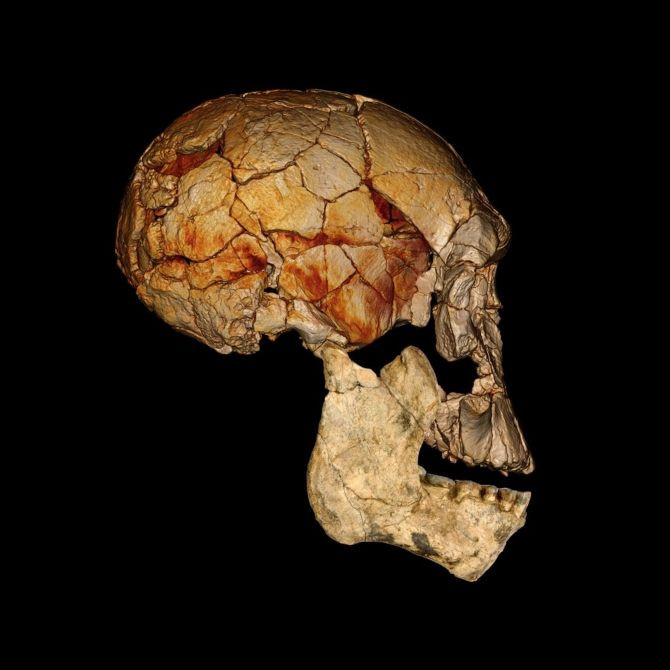Fossil Discovery Suggests Several Species of Early Humans Coexisted in Africa

Newly discovered fossils from Northern Kenya suggest that a new species of early human lived two million years ago, leading scientists to believe that there were at least two distinct Homo species that co-existed alongside the one that eventually evolved to become modern humans.
Researchers, reporting in the journal Nature, believe that the recently unearthed fossils were remnants that belonged to the same species as the 2-million-year-old skull named KNM-ER 1470, which they have named Homo rudolfensis.
"For the past 40 years we have looked long and hard in the vast expanse of sediments around Lake Turkana for fossils that confirm the unique features of 1470's face and show us what its teeth and lower jaw would have looked like," Anthropologist Meave Leakey said in a news release. "At last we have some answers."
While the newly found partial skull and two jawbones that are between looked very different from modern humans, researchers were able to match the 1.78-to-1.95-million-year-old fossils to the nearly complete cranium found in 1972 that paleoanthropologists have struggled for decades to fit into the human family tree.
Researchers said that together the new fossils and the enigmatic skull found 40 years ago illustrate a pre-human species that is clearly distinct from two others identified from fossils of the same period.
Researchers said that the skull of the Homo rudolfensis is noticeably different compared to skulls from other species from that time, readily distinguished by its large brain size and long flat face.
For decades, the skull was the only example of the species, so it was impossible for scientists to conclude whether the skull belonged to an individual that was an unusual specimen or a member of a new species.
However with the discovery of the three new fossils, anthropologists can now confirm that the H.rudolfensis was really a distinct pre-human species that existed alongside other species of human ancestors around two million years ago.
"Combined, the three new fossils give a much clearer picture of what 1470 looked like," researcher Fred Spoor said in a statement. "As a result, it is now clear that two species of early Homo lived alongside Homo erectus. The new fossils will greatly help in unraveling how our branch of human evolution first emerged and flourished almost two million years ago."
For a while scientists believed that the oldest known human ancestor was thought to be the 1.8-million-year-old Homo erectus, a primitive species with small heads, prominent brows and stood upright.
However, researchers discovered 50 years ago that an even older and more primitive species of human called Homo habilis may have lived alongside with the Homo erectus, and now it appears that the Homo rudolfensis was also co-existed with the two previously discovered species, leading scientists to question whether many other pre-human species also existed at the time.
The latest discovery adds to the growing body of evidence that contradicts the general belief of linear evolution that humans evolved from apes that evolved from monkeys in a smooth linear progression.
Instead, researchers said that human origins appear to be more complex because fossils of different pre-human species, including the recently confirmed Homo rudolfensis show that there was diversity early on in the evolution of the human species.
"Our past was a diverse past," Leakey told BBC News, "our species was evolving in the same way that other species of animals evolved. There was nothing unique about us until we began to make sophisticated stone tools."
Human evolution may followed the evolutionary course of many other animals where many different species evolve, each with new traits like feathers or webbed feet, and if the new trait ensured better survival in the environment than the new species thrives, and if not it becomes extinct.
"Humans seem to have been evolving in different ways in different regions. It was almost as if nature was developing different human prototypes with different attributes, only one of which, an ancestor of our species, was ultimately successful in evolutionary terms," said Professor Chris Stringer of the Natural History Museum in London, according to BBC.



























